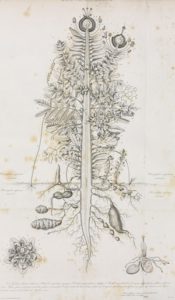Nature news feature: The lost art of looking at plants
 Nature. With the advent of advanced molecular techniques and tools, the detailed scrutiny of a plant’s physical attributes fell to the wayside. Focus has shifted from physiological characterization of a board range of species to detailed genomic work being done on a few select model organisms and, consequently, botany departments were forgotten and dismantled. Then came the rise of technological improvements to imaging and gene editing, such as computed tomography (CT) scanners which can create 3D reconstructions of internal plant structures without destroying tissue and drones with laser scanners, depth sensors, and thermal imaging cameras to help improve crop breeding. These recent advances are leading to a resurgence into the areas of plant physiology, morphology, and diversity. “Welcome to Botany 2.0!” As Heidi Ledford explains, these changes in research interests leave many current molecular geneticists seeking more knowledge about botany in order to gain full appreciation and comprehension of their assays. Are you looking for more knowledge in botany? This article also highlights a program established in 2013 at the University of Connecticut- an intensive botany bootcamp. Perhaps other universities will notice the large amount of applicants applying, most of which have to be turned away, and open their own programs. (Summary by Alecia Biel) Nature. 10.1038/d41586-018-01075-5.
Nature. With the advent of advanced molecular techniques and tools, the detailed scrutiny of a plant’s physical attributes fell to the wayside. Focus has shifted from physiological characterization of a board range of species to detailed genomic work being done on a few select model organisms and, consequently, botany departments were forgotten and dismantled. Then came the rise of technological improvements to imaging and gene editing, such as computed tomography (CT) scanners which can create 3D reconstructions of internal plant structures without destroying tissue and drones with laser scanners, depth sensors, and thermal imaging cameras to help improve crop breeding. These recent advances are leading to a resurgence into the areas of plant physiology, morphology, and diversity. “Welcome to Botany 2.0!” As Heidi Ledford explains, these changes in research interests leave many current molecular geneticists seeking more knowledge about botany in order to gain full appreciation and comprehension of their assays. Are you looking for more knowledge in botany? This article also highlights a program established in 2013 at the University of Connecticut- an intensive botany bootcamp. Perhaps other universities will notice the large amount of applicants applying, most of which have to be turned away, and open their own programs. (Summary by Alecia Biel) Nature. 10.1038/d41586-018-01075-5.



